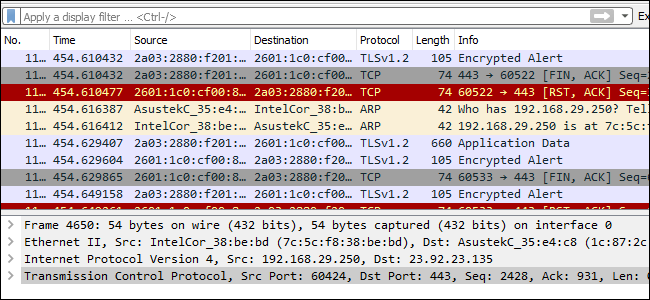Before I start here are the stats of my internet connection:
ISP is Cox High Speed Internet- Our plan is 100 mbps which we get 100+ when its not spiking
Modem is a Cisco Model DPQ3212
Router - Apple Airport - roughly 15 device connected via wifi and 4 ethernet
My computer is currently wired directly into the router
For my computer I built it about 3 years ago some specs are
i5 intel Processor
Asus z170 Motherboard
I can't remember power supply but It's definitely got enough power
Windows 10 OS
As the title says I have been having high ping spikes randomly throughout the day. My internet was always able to handle anything I threw at it until roughly 10 months ago when I first started experience any kind of regular spikes. At first it seemed to be just a small spike every once in awhile that would cause my game (Usually League of Legends on the computer or COD on Xbox One) to freeze for a second then get right back to where I was. This was OK, it was annoying but definitely still playable. Around 5-6 months ago things seemed to get progressively worse with the spikes happening quite frequently. Within the last 3 months it's pretty much a daily encounter. My internet can be fine for hours at a time, sometimes a day or two, then randomly my ping with start to jump erratically. Typically the ping on LOL is around 70-80 but when I get spikes it goes all over from 90-300. I also play COD on the XBOX One with my brother in the same house and when experience the same issue with super random spike in latency when playing. It stays relatively unstable for any length of time. Sometime lasting 5 mins and others going for a few hours. This happens at any time of the day as well 2am, 2pm, 11 am, literally all times of the day. And it will happen when there's everyone in my family using the internet or when I am the only one up at 4 am it can start to spike, even if I have changed nothing at all.
Here is a list of everything I've tried or tried to monitor until now:
-I first tried restarting the whole network by unplugging the router, modem and shutting down my computer then plugging the modem in and letting it boot, then the router and finally my computer. Sometimes this might make the internet better but just as often the internet is still spiking.
-I've monitored my task manager and made sure my CPU/RAM or any other stats aren't being maxed out, which they do something if I have Microsoft Edge open while gaming.
-We've called Cox numerous times, and since the internet only spikes randomly I've never been able to get them to see this issue since they only monitor it through speed test.net (which in my opinion is awful at capturing my connection since it never seems to capture the spikes when they're happening). They've sent out technicians 2 times now. The first time they changed a setting on the router and told me the apple airport might be the issue and I should to replace it before calling again. The second guy went and checked all of the wires in our house which he said they all seemed fine.
-We then replaced our router and modem with a nighthawk x6s router and a good modem we were told, I forget which one(Arris Surfboard I think), but the internet didn't get better and even seemed to feel worse no matter what combination of old and new equipment I used.
-I have plugged my computer directly into the modem and tested it and he issue seems to persist or even get worse.
-I've tried changing firewall settings, updating computer drivers and router/modem settings
-After some researching I then began testing my ping first using the command "ping -t 8.8.8.8" to ping google.com on a loop and started monitoring the ping. I took those pings and plotted them in excel to get a graph over time of my ping at certain times of the day. I included some screenshots of them at the end. After studying the ping a bit I noted a few things 1) my ping when not spiking was usually 20-30ms with the occasional 50 or 60 so not bad 2) when I started to lag in game the ping would reflect that and pretty much go haywire 3) after a while sometimes the pings go back to 20-60 but every 10-20 seconds I will still get to 100-200ms 4) when it gets bad I will start to get a bunch of "Request times out" messages in a row.
-As stated earlier I experience this on my PC and also my Xbox one. I also tried to test the ping on two other separate computers, all of which show similar results so I've concluded not my computer.
-I have also tried a tracert to google.com to see if there was a specific hop that seemed to be the issue. The first hop(which I believe is my router) is always consistently at 1-2 ms but after that its random which hop comes up with high ms. I run the tracert command a few times to see if there is a consistent hop that is the problem but each time I run it usually a different hop then before is spiking which I believe means there isn't a problem with any one of those hops and it just spikes as my connection does. This also mad me thing it could possibly be my modem/ISP company even though they say everything is working. I'm inluding screenshots of just the pings to google for some of my tracerts at the end as well.
At this point I've tried almost everything I can think of to try and fix my internet and I am extremely frustrated. I've read a lot of the other threads on here but all the other issues seem to be either related to a PC/Wifi or completely lacking in any evidence that they are indeed having an issue. I'm throwing this thread out in desperation that there is a trick out there I haven't tried or something that I missed to fix my internet. If there's any additional information needed I'll do my best to provide it.
Here are the pictures of my ping tests:
View: https://imgur.com/a/NtXVJ0Q
ISP is Cox High Speed Internet- Our plan is 100 mbps which we get 100+ when its not spiking
Modem is a Cisco Model DPQ3212
Router - Apple Airport - roughly 15 device connected via wifi and 4 ethernet
My computer is currently wired directly into the router
For my computer I built it about 3 years ago some specs are
i5 intel Processor
Asus z170 Motherboard
I can't remember power supply but It's definitely got enough power
Windows 10 OS
As the title says I have been having high ping spikes randomly throughout the day. My internet was always able to handle anything I threw at it until roughly 10 months ago when I first started experience any kind of regular spikes. At first it seemed to be just a small spike every once in awhile that would cause my game (Usually League of Legends on the computer or COD on Xbox One) to freeze for a second then get right back to where I was. This was OK, it was annoying but definitely still playable. Around 5-6 months ago things seemed to get progressively worse with the spikes happening quite frequently. Within the last 3 months it's pretty much a daily encounter. My internet can be fine for hours at a time, sometimes a day or two, then randomly my ping with start to jump erratically. Typically the ping on LOL is around 70-80 but when I get spikes it goes all over from 90-300. I also play COD on the XBOX One with my brother in the same house and when experience the same issue with super random spike in latency when playing. It stays relatively unstable for any length of time. Sometime lasting 5 mins and others going for a few hours. This happens at any time of the day as well 2am, 2pm, 11 am, literally all times of the day. And it will happen when there's everyone in my family using the internet or when I am the only one up at 4 am it can start to spike, even if I have changed nothing at all.
Here is a list of everything I've tried or tried to monitor until now:
-I first tried restarting the whole network by unplugging the router, modem and shutting down my computer then plugging the modem in and letting it boot, then the router and finally my computer. Sometimes this might make the internet better but just as often the internet is still spiking.
-I've monitored my task manager and made sure my CPU/RAM or any other stats aren't being maxed out, which they do something if I have Microsoft Edge open while gaming.
-We've called Cox numerous times, and since the internet only spikes randomly I've never been able to get them to see this issue since they only monitor it through speed test.net (which in my opinion is awful at capturing my connection since it never seems to capture the spikes when they're happening). They've sent out technicians 2 times now. The first time they changed a setting on the router and told me the apple airport might be the issue and I should to replace it before calling again. The second guy went and checked all of the wires in our house which he said they all seemed fine.
-We then replaced our router and modem with a nighthawk x6s router and a good modem we were told, I forget which one(Arris Surfboard I think), but the internet didn't get better and even seemed to feel worse no matter what combination of old and new equipment I used.
-I have plugged my computer directly into the modem and tested it and he issue seems to persist or even get worse.
-I've tried changing firewall settings, updating computer drivers and router/modem settings
-After some researching I then began testing my ping first using the command "ping -t 8.8.8.8" to ping google.com on a loop and started monitoring the ping. I took those pings and plotted them in excel to get a graph over time of my ping at certain times of the day. I included some screenshots of them at the end. After studying the ping a bit I noted a few things 1) my ping when not spiking was usually 20-30ms with the occasional 50 or 60 so not bad 2) when I started to lag in game the ping would reflect that and pretty much go haywire 3) after a while sometimes the pings go back to 20-60 but every 10-20 seconds I will still get to 100-200ms 4) when it gets bad I will start to get a bunch of "Request times out" messages in a row.
-As stated earlier I experience this on my PC and also my Xbox one. I also tried to test the ping on two other separate computers, all of which show similar results so I've concluded not my computer.
-I have also tried a tracert to google.com to see if there was a specific hop that seemed to be the issue. The first hop(which I believe is my router) is always consistently at 1-2 ms but after that its random which hop comes up with high ms. I run the tracert command a few times to see if there is a consistent hop that is the problem but each time I run it usually a different hop then before is spiking which I believe means there isn't a problem with any one of those hops and it just spikes as my connection does. This also mad me thing it could possibly be my modem/ISP company even though they say everything is working. I'm inluding screenshots of just the pings to google for some of my tracerts at the end as well.
At this point I've tried almost everything I can think of to try and fix my internet and I am extremely frustrated. I've read a lot of the other threads on here but all the other issues seem to be either related to a PC/Wifi or completely lacking in any evidence that they are indeed having an issue. I'm throwing this thread out in desperation that there is a trick out there I haven't tried or something that I missed to fix my internet. If there's any additional information needed I'll do my best to provide it.
Here are the pictures of my ping tests:
View: https://imgur.com/a/NtXVJ0Q






